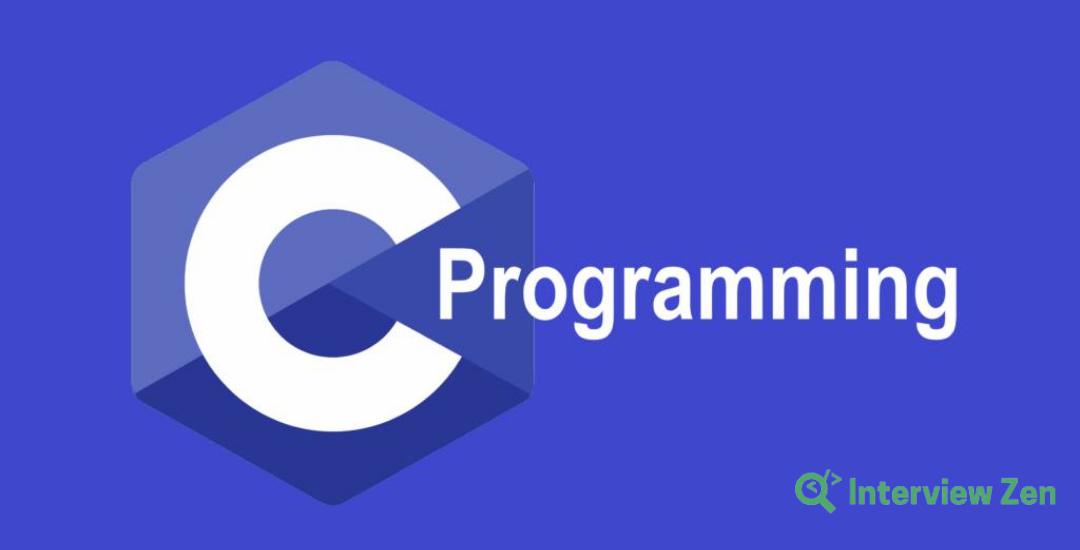Introduction
C++ remains a foundational language in computer science and software engineering, valued for its efficiency, performance, and versatility. The role of C++ in developing complex systems that require real-time processing and multi-threading makes it a go-to choice for software engineers aiming to push the limits of computing.
Selecting the right C++ interview questions is important in identifying and hiring top talent in the software development industry. The right questions gauge a candidate’s technical expertise and problem-solving skills and their ability to adapt and innovate within this robust programming language.
According to Statista, C++ ranks as the 9th most-used programming language among developers worldwide in 2024. This statistic highlights the sustained interest and reliance on C++ in the developer community and emphasizes its critical role in the current and future landscapes of software development.

In this article, we will explore the top 10 C++ interview questions that hiring managers and technical recruiters can use to identify the most qualified candidates for software development roles.
What is C++?
C++ is a statically typed, compiled, general-purpose programming language that is an extension of the C language. It offers a blend of both high-level and low-level features, allowing programmers to achieve a balance between program efficiency and development efficiency. C++ is widely used for developing applications where performance and resource management are critical.
History
The development of C++ began in 1979 by Bjarne Stroustrup as an enhancement to the C programming language. Initially called “C with Classes,” the language was renamed C++ in 1983, symbolizing the evolutionary nature of the changes from C.
This included introducing classes, inheritance, and strong type-checking, among other features. Since then, C++ has undergone several standardizations, the most significant being ISO/IEC standards such as C++98, C++03, C++11, C++14, C++17, and the latest, C++20, each adding new features and improvements to the language.
According to the TIOBE Index, C++ is the 3rd most popular programming language with ratings (9.96) in 2024. This statistic shows the language’s enduring relevance and popularity in the global programming landscape, highlighting its critical role in educational and professional contexts.

Key Features
- Object-Oriented Programming (OOP): C++ supports classes and objects, enabling the encapsulation, inheritance, and polymorphism principles of OOP.
- Memory Management: It provides explicit control over memory management, allowing for dynamic allocation and deallocation of memory as needed.
- Standard Template Library (STL): A collection of ready-to-use libraries for various data structures, algorithms, and iterators.
- Multi-paradigm Programming: It supports procedural, object-oriented, and generic programming paradigms, making it highly versatile.
- Performance: It offers high performance and fine control over system resources, which is crucial for applications that require optimization and speed.
C++ Coding Examples
Here are some C++ coding examples:
1. Hello World Example
| #include <iostream>
int main() { std::cout << “Hello, World!” << std::endl; return 0; } |
2. Basic Class Example
| #include <iostream>
using namespace std; class Rectangle { public: int width, height; Rectangle(int w, int h) : width(w), height(h) {} int area() { return width * height; } }; int main() { Rectangle rect(10, 20); cout << “Area: ” << rect.area() << endl; return 0; } |
Popular Companies Using C++
- Microsoft: Uses C++ for developing Windows applications, game development with Xbox, and system-level programming.
- Google: Employs C++ for several of its back-end systems, including its search engine and YouTube. Google also developed Chrome using C++ for its core components.
- Facebook: Utilizes C++ for high-performance and real-time services, such as certain aspects of its backend systems, including the TAO distributed data store.
- Amazon: Uses C++ for high-performance services, including AWS technologies and critical components of its retail website.
- Adobe Systems: Leverages C++ for the development of various creative software applications like Photoshop, Illustrator, and Adobe Premiere.
- Apple: Utilizes C++ in the development of macOS and iOS operating systems, as well as for system-level applications and frameworks.
- Sony Interactive Entertainment: Uses C++ extensively for PlayStation console development, including the system software and game development.
- Oracle: Employs C++ for the development of database engines and performance-critical parts of its software products.
- Mozilla: Developed Firefox, a popular web browser, using C++ for its core components, emphasizing the language’s capabilities in creating complex, performance-sensitive applications.
- Electronic Arts (EA): Utilizes C++ for game development, leveraging its performance capabilities for rendering, physics calculations, and gameplay programming.
10 Must Ask C++ Interview Questions
Let’s explore the top 10 must ask C++ interview questions:
1. Merging Sorted Arrays
| Task | Write a C++ program to merge two sorted arrays into a single sorted array. |
| Input Format |
|
| Output Format | Print the merged sorted array as a sequence of space-separated integers. |
| Sample Input | 3
1 3 5 4 2 4 6 8 |
| Output | 1 2 3 4 5 6 8 |
Suggested Answer
| #include <iostream>
#include <vector> using namespace std; vector<int> mergeSortedArrays(const vector<int>& a, const vector<int>& b) { vector<int> result; int i = 0, j = 0; while (i < a.size() && j < b.size()) { if (a[i] < b[j]) { result.push_back(a[i++]); } else { result.push_back(b[j++]); } } while (i < a.size()) result.push_back(a[i++]); while (j < b.size()) result.push_back(b[j++]);
return result; } int main() { int n, m, temp; vector<int> a, b;
cin >> n; for(int i = 0; i < n; i++) { cin >> temp; a.push_back(temp); }
cin >> m; for(int i = 0; i < m; i++) { cin >> temp; b.push_back(temp); }
vector<int> merged = mergeSortedArrays(a, b); for(int i : merged) { cout << i << ” “; } cout << endl;
return 0; } |
Code Explanation
This solution uses two pointers, i and j, to traverse the two input arrays a and b. At each step, it compares the current elements pointed by i and j, adding the smaller one to the result array and moving the respective pointer forward. This process continues until all elements from both arrays are processed and added to the result array, which is then returned.
| Common Mistakes to Watch Out For |
|
| Follow-ups |
|
| What the question tests? | This question evaluates the candidate’s ability to work with arrays, their understanding of the two-pointer technique, and their capability to solve problems involving merging data while maintaining order. It also tests basic problem-solving skills and the application of simple algorithmic techniques in C++. |
2. Inheritance and Polymorphism in Shapes
| Task | Design a simple C++ program that demonstrates the concept of inheritance and polymorphism using a base class Shape and derived classes Circle and Rectangle. The Shape class should have a virtual function area() that calculates the area of the shape. |
| Constraints |
|
| Output Format | The program should output the area of a circle and a rectangle by creating instances of the respective classes and calling their area function. |
| Sample Input | Area of Circle: 78.54
Area of Rectangle: 20 |
| Output | 1 2 3 4 5 6 8 |
Suggested Answer
| #include <iostream>
#include <cmath> using namespace std; class Shape { public: virtual double area() const = 0; // Pure virtual function }; class Circle : public Shape { private: double radius; public: Circle(double r) : radius(r) {} double area() const override { return M_PI * radius * radius; } }; class Rectangle : public Shape { private: double width, height; public: Rectangle(double w, double h) : width(w), height(h) {} double area() const override { return width * height; } }; int main() { Shape* shapes[2]; shapes[0] = new Circle(5); // Radius of the circle is 5 shapes[1] = new Rectangle(4, 5); // Width and height of the rectangle are 4 and 5 cout << “Area of Circle: ” << shapes[0]->area() << endl; cout << “Area of Rectangle: ” << shapes[1]->area() << endl; delete shapes[0]; delete shapes[1]; return 0; } |
Code Explanation
This solution illustrates the concepts of inheritance and polymorphism in C++. The Shape class is an abstract base class with a pure virtual function area. The Circle and Rectangle classes inherit from Shape and provide specific implementations of the area function. This demonstrates polymorphism, as the area function is called on a Shape pointer, but the appropriate derived class implementation is executed.
| Common Mistakes to Watch Out For |
|
| Follow-ups |
|
| What the question tests? | This question tests the candidate’s understanding of key object-oriented programming concepts in C++, such as class inheritance, the use of virtual functions for polymorphism, and the practical application of these concepts in designing a simple, extensible program. It evaluates the candidate’s ability to think in terms of abstractions and to implement clean, maintainable code. |
3. Recursive Palindrome Checker
| Task | Write a function in C++ that checks whether a given string is a palindrome using recursion. |
| Input Format | A single line containing the string to be checked. |
| Constraints | The string consists only of lowercase letters and has a length of at most 100100 characters. |
| Output Format | Print “Yes” if the string is a palindrome and “No” if it is not. |
| Sample Input | radar |
| Output | Yes |
Suggested Answer
| #include <iostream>
#include <string> using namespace std; bool isPalindrome(const string& str, int start, int end) { if (start >= end) return true; if (str[start] != str[end]) return false; return isPalindrome(str, start + 1, end – 1); } int main() { string s; cin >> s; cout << (isPalindrome(s, 0, s.length() – 1) ? “Yes” : “No”) << endl; return 0; } |
Code Explanation
This solution demonstrates the use of recursion to check if a string is a palindrome. The isPalindrome function compares the first and last characters of the string, then recursively checks the substring excluding these two characters. If at any point the characters don’t match, it returns false. The base case for the recursion is when the start index is greater than or equal to the end index, indicating that the check has completed for all character pairs.
| Common Mistakes to Watch Out For |
|
| Follow-ups |
|
| What the question tests? | This question tests the candidate’s understanding of recursion, a fundamental programming concept, and their ability to apply it to solve problems in C++. It also evaluates the candidate’s understanding of string manipulation and basic control flow in C++. |
4. Dynamic Array Allocation and Deallocation
| Task | Implement a C++ function that dynamically allocates an array of integers, fills it with consecutive numbers starting from 1, and then deallocates the memory. Additionally, print the contents of the array before deallocating. |
| Input Format | An integer n representing the size of the array. |
| Output Format | Output the contents of the array, with each element followed by a space. |
| Sample Input | 5 |
| Output | 1 2 3 4 5 |
Suggested Answer
| #include <iostream>
using namespace std; void fillAndPrintArray(int size) { int* arr = new int[size]; for (int i = 0; i < size; ++i) { arr[i] = i + 1; cout << arr[i] << ” “; } cout << endl; delete[] arr; } int main() { int n; cin >> n; fillAndPrintArray(n); return 0; } |
Code Explanation
The provided solution showcases dynamic memory allocation and deallocation in C++. An array of integers is allocated dynamically using the new operator based on the size input by the user. The array is then filled with consecutive numbers starting from 1. After printing the array’s contents, the allocated memory is properly deallocated using the delete[] operator to prevent memory leaks.
| Common Mistakes to Watch Out For |
|
| Follow-ups |
|
| What the question tests? | This question tests the candidate’s understanding of dynamic memory management in C++, including the use of new and delete[] for memory allocation and deallocation. It evaluates the candidate’s ability to manage resources efficiently and their understanding of basic C++ syntax and control structures. |
5. Reversing a Vector Using STL
| Task | Write a C++ program that reads a list of integers into a vector, reverses the vector, and then prints the reversed vector. |
| Input Format |
|
| Output Format | Print the elements of the reversed vector, each followed by a space. |
| Sample Input | 5
1 2 3 4 5 |
| Output | 5 4 3 2 1 |
Suggested Answer
| #include <iostream>
#include <vector> #include <algorithm> // For std::reverse using namespace std; int main() { int n; cin >> n; vector<int> vec(n); for (int i = 0; i < n; ++i) { cin >> vec[i]; }
// Reverse the vector using STL algorithm reverse(vec.begin(), vec.end());
// Print the reversed vector for (int i : vec) { cout << i << ” “; } cout << endl;
return 0; } |
Code Explanation
This solution demonstrates the use of the C++ Standard Template Library (STL) to solve the problem efficiently. After reading the input into a vector<int>, it utilizes the std::reverse function from the <algorithm> header to reverse the elements of the vector in-place. Finally, the program iterates over the reversed vector to print each element, showcasing basic STL container and algorithm usage.
| Common Mistakes to Watch Out For |
|
| Follow-ups |
|
| What the question tests? | This question tests the candidate’s familiarity with the C++ Standard Template Library, specifically their ability to work with vectors and use STL algorithms to manipulate data. It assesses the candidate’s knowledge of basic STL functions, input/output operations in C++, and efficient problem-solving strategies using the library’s capabilities. |
6. Implementing a Custom String Concatenation Function
| Task | Write a C++ function named concatenateStrings that takes two C-style string arguments (char arrays terminated by a null character) and returns a new string that is the concatenation of the two input strings. The function should manually allocate memory for the result to ensure it fits the concatenated strings exactly. |
| Constraints | The combined length of the strings will not exceed 104104 characters. |
| Output Format | The function should return a pointer to a dynamically allocated array containing the concatenated result. |
Sample Usage
| char str1[] = “Hello, “;
char str2[] = “World!”; char* result = concatenateStrings(str1, str2); cout << result; // Expected output: “Hello, World!” delete[] result; // Remember to free the allocated memory |
Suggested Answer
| #include <iostream>
using namespace std; char* concatenateStrings(const char* str1, const char* str2) { int length1 = 0; while (str1[length1] != ‘\0’) ++length1;
int length2 = 0; while (str2[length2] != ‘\0’) ++length2;
char* result = new char[length1 + length2 + 1]; // +1 for the null terminator
for (int i = 0; i < length1; ++i) { result[i] = str1[i]; } for (int i = 0; i < length2; ++i) { result[length1 + i] = str2[i]; } result[length1 + length2] = ‘\0’;
return result; } int main() { char str1[] = “Hello, “; char str2[] = “World!”; char* result = concatenateStrings(str1, str2); cout << result << endl; delete[] result; // Free the allocated memory return 0; } |
Code Explanation
The function concatenateStrings first calculates the lengths of both input strings. It then allocates a new character array of the appropriate size to hold the concatenated strings plus a null terminator. The function copies the characters from the first and second input strings into the newly allocated array and ensures it is properly null-terminated before returning the pointer to the concatenated string.
| Common Mistakes to Watch Out For |
|
| Follow-ups |
|
| What the question tests? | This question tests the candidate’s ability to work with low-level string manipulation in C++, including understanding of dynamic memory allocation, arrays, and pointers. It emphasizes the importance of memory management and careful attention to detail in handling C-style strings, a fundamental aspect of C++ programming. |
7. Implementing a Stack with Min Function
| Task | Design a C++ class MinStack that supports pushing, popping elements, and retrieving the minimum element in the stack at any time. All operations should be performed in constant time. |
| Constraints |
|
| Output Format |
|
Sample Usage
| MinStack minStack;
minStack.push(3); minStack.push(5); cout << minStack.getMin() << endl; // Expected output: 3 minStack.push(2); minStack.push(1); cout << minStack.getMin() << endl; // Expected output: 1 minStack.pop(); cout << minStack.getMin() << endl; // Expected output: 2 |
Suggested Answer
| #include <iostream>
#include <stack> using namespace std; class MinStack { private: stack<int> s1; // Main stack to store elements stack<int> s2; // Stack to store minimum elements public: void push(int x) { s1.push(x); if (s2.empty() || x <= getMin()) s2.push(x); } void pop() { if (s1.top() == getMin()) s2.pop(); s1.pop(); } int top() { return s1.top(); } int getMin() { return s2.top(); } }; int main() { MinStack minStack; minStack.push(3); minStack.push(5); cout << minStack.getMin() << endl; // 3 minStack.push(2); minStack.push(1); cout << minStack.getMin() << endl; // 1 minStack.pop(); cout << minStack.getMin() << endl; // 2 return 0; } |
Code Explanation
The MinStack class uses two stacks: s1 for storing all the elements and s2 for keeping track of the minimum elements. Whenever a new element is pushed onto the stack, it is also pushed onto s2 if it is smaller than or equal to the current minimum. When popping an element, if it is the current minimum, it is also popped from s2. This ensures that getMin() can always return the current minimum in constant time.
| Common Mistakes to Watch Out For |
|
| Follow-ups |
|
| What the question tests? | This question tests the candidate’s ability to design and implement a slightly more complex data structure than standard stack operations. It evaluates their understanding of stack usage, the importance of auxiliary space to achieve constant time operations for specific tasks, and their problem-solving skills in maintaining the state of the minimum element efficiently. |
8. Detecting Loop in a Linked List
| Task | Implement a function in C++ to check if a given linked list contains a loop. The function should return true if a loop is found and false otherwise. |
| Constraints |
|
| Output Format | The function should return a boolean value: true if a loop is detected in the list, otherwise false. |
| Sample Input | A linked list: 3 -> 2 -> 0 -> -4, where the last node points back to the second node. |
| Output | true |
Suggested Answer
| #include <iostream>
using namespace std; class ListNode { public: int val; ListNode *next; ListNode(int x) : val(x), next(nullptr) {} }; bool hasCycle(ListNode *head) { if (head == nullptr) return false;
ListNode *slow = head, *fast = head; while (fast->next != nullptr && fast->next->next != nullptr) { slow = slow->next; fast = fast->next->next; if (slow == fast) { return true; } } return false; } // Example usage is omitted as per the new instructions. |
Code Explanation
The suggested solution uses Floyd’s Cycle Finding Algorithm (also known as the tortoise and the hare algorithm). It involves two pointers, slow and fast, which move through the list at different speeds. slow moves one node at a time, while fast moves two nodes at a time. If there is a loop in the list, these two pointers will eventually meet at some node within the loop, indicating a cycle exists. If fast reaches the end of the list (null), then no cycle is present.
| Common Mistakes to Watch Out For |
|
| What the question tests? | This question evaluates the candidate’s knowledge of linked lists, their ability to implement a specific algorithm to solve a common problem, and their understanding of pointers and iteration through a data structure. |
9. Implementing Binary Search on a Rotated Array
| Task | Write a function in C++ that performs a binary search on a rotated sorted array (an array that has been rotated at some pivot unknown to you beforehand) to find a target value. The function should return the index of the target value if it’s found in the array, or -1 if it’s not present. |
| Input Format |
|
| Output Format | Return the index of target in the rotated sorted array, or -1 if it is not found. |
| Sample Input | 7
4 5 6 7 0 1 2 0 |
| Output | 4 |
Suggested Answer
| #include <iostream>
#include <vector> using namespace std; int search(vector<int>& nums, int target) { int left = 0, right = nums.size() – 1; while (left <= right) { int mid = left + (right – left) / 2; if (nums[mid] == target) return mid; // Check if the left side is sorted if (nums[left] <= nums[mid]) { if (target >= nums[left] && target < nums[mid]) { right = mid – 1; } else { left = mid + 1; } } // Otherwise, the right side must be sorted else { if (target > nums[mid] && target <= nums[right]) { left = mid + 1; } else { right = mid – 1; } } } return -1; } int main() { vector<int> nums = {4, 5, 6, 7, 0, 1, 2}; int target = 0; cout << search(nums, target) << endl; return 0; } |
Code Explanation
The solution modifies the standard binary search algorithm to account for the array being rotated. It first determines which half of the array is in sorted order (either the left or right half) by comparing the middle element to the endpoints.
Then, it decides whether to adjust the search boundaries to the left or right half based on whether the target value lies within the sorted portion of the array. This approach maintains the logarithmic time complexity of binary search while handling the added complexity of the array’s rotation.
| Common Mistakes to Watch Out For |
|
| What the question tests? | This question tests the candidate’s ability to adapt and apply the binary search algorithm to a non-standard problem, evaluating their problem-solving skills, understanding of binary search, and ability to work with array data structures in C++. |
10. Finding the Kth Largest Element in an Unsorted Array
| Task | Implement a function in C++ to find the kth largest element in an unsorted array. The function should return the kth largest element as per the zero-based indexing. |
| Input Format |
|
| Output Format | Return the kth largest element in the array. |
| Sample Input | 6
3 2 1 5 6 4 2 |
| Output | 4 |
Suggested Answer
| #include <iostream>
#include <vector> #include <algorithm> using namespace std; int findKthLargest(vector<int>& nums, int k) { sort(nums.begin(), nums.end(), greater<int>()); return nums[k]; } int main() { vector<int> nums = {3, 2, 1, 5, 6, 4}; int k = 2; // Looking for the 2nd largest element cout << findKthLargest(nums, k) << endl; return 0; } |
Code Explanation
The suggested solution sorts the array in descending order using the std::sort function from the C++ Standard Template Library, with the greater<int>() comparator for descending order. After sorting, the function directly accesses the kth element in the sorted array to find the kth largest element. This method is straightforward but not the most efficient, as sorting the entire array requires O(nlogn) time.
| Common Mistakes to Watch Out For |
|
| What the question tests? | This question assesses the candidate’s understanding of sorting algorithms, their ability to apply standard library functions effectively, and their knowledge of algorithmic efficiency. It also tests the candidate’s attention to detail regarding indexing in arrays. While the provided solution is correct, discussing more efficient methods, such as the QuickSelect algorithm, which can achieve this task in average O(n) time, would demonstrate deeper algorithmic knowledge and problem-solving skills. |
Conclusion
Creating a comprehensive C++ interview process requires a strategic approach that evaluates candidates on various skills, from basic programming constructs and data types to complex problem-solving involving algorithms and data structures.
The key is to create questions that assess foundational knowledge with those that challenge a candidate’s ability to apply concepts in novel situations, ensuring a thorough understanding of both C++ syntax and the underlying principles of software development.
Interview Zen is a valuable platform for hiring managers aiming to craft comprehensive and effective C++ interview questions. Its streamlined interface and robust functionality simplify technical interview creation, administration, and evaluation, enabling a more efficient hiring process that focuses on identifying top-tier software development talent.
Begin enhancing your technical interviews today with Interview Zen to discover and hire the best software development talent efficiently.




